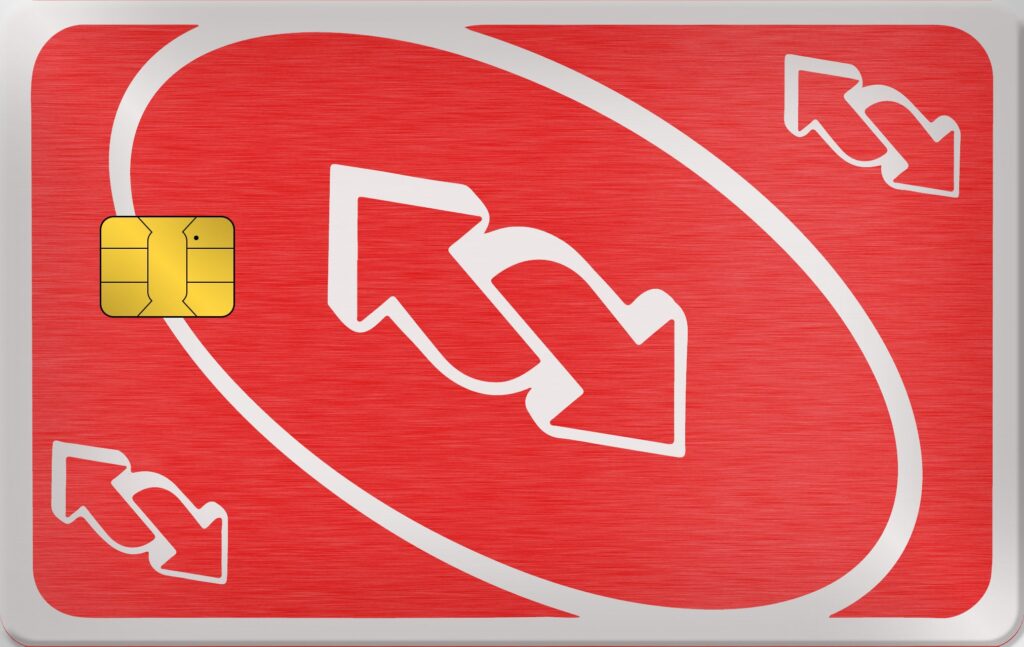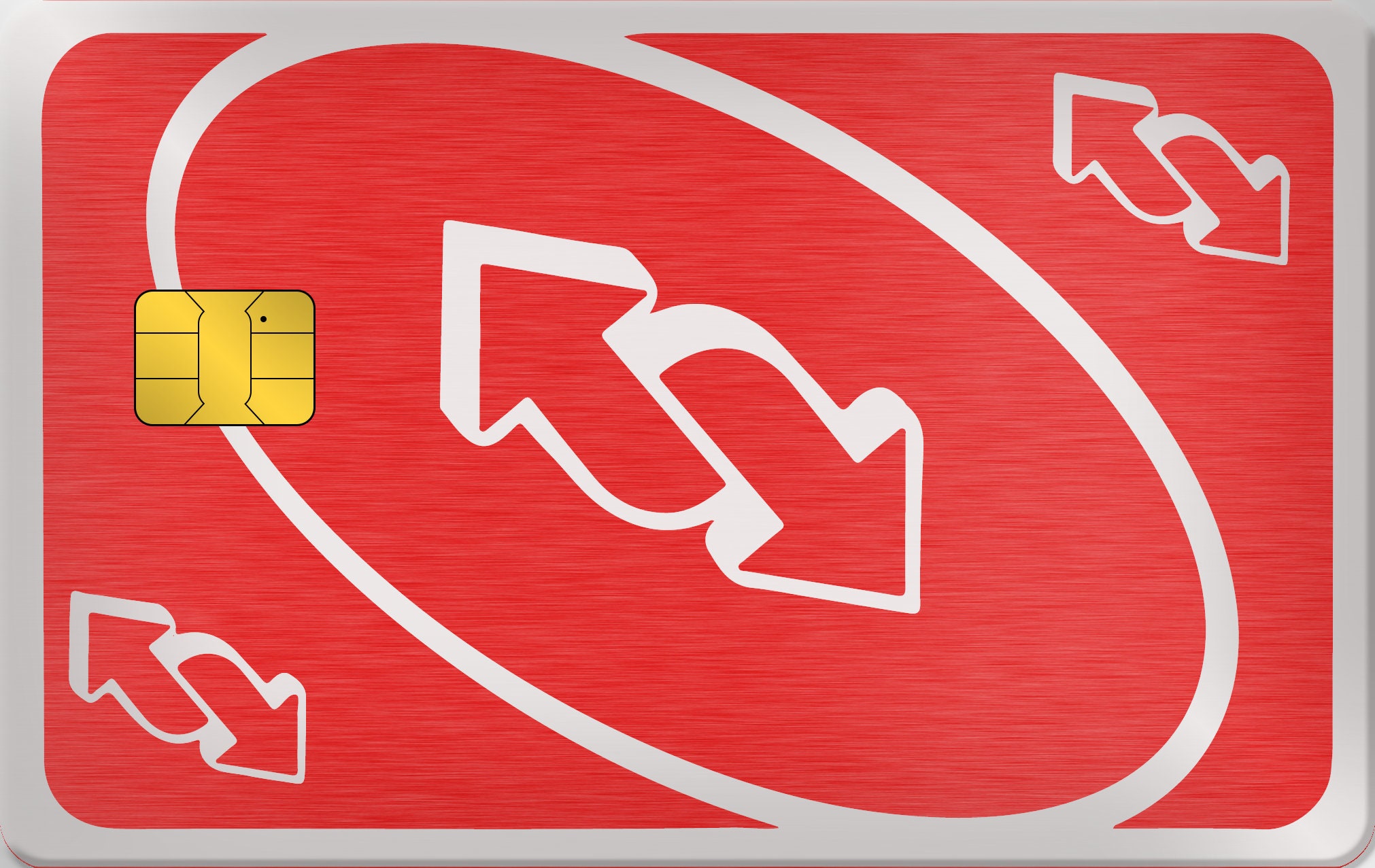
Unveiling the Mystique of the Reverse Card: A Comprehensive Guide
The reverse card, a seemingly simple addition to many popular card games, holds a surprising amount of strategic depth and social impact. Often associated with games like Uno, its presence can instantly shift momentum, disrupt carefully laid plans, and inject a dose of unpredictable chaos into gameplay. This article delves into the history, mechanics, strategic uses, and psychological impact of the reverse card, providing a comprehensive understanding of its role in the world of card games.
The Origins and Evolution of the Reverse Card
While the exact origins of the reverse card are difficult to pinpoint, its widespread popularity is largely attributed to its inclusion in Uno. Uno, created by Merle Robbins in 1971, quickly gained traction as a family-friendly card game with simple rules and exciting gameplay. The reverse card, along with other action cards like Skip and Draw Two, became a defining feature of the game, contributing to its strategic complexity and replayability.
Before Uno, similar mechanics existed in other card games, but the reverse card as we know it today became popularized due to Uno’s success. Its impact is undeniable, and the concept has even been adopted in other games, both physical and digital. The simplicity of the reverse card belies its powerful influence on the game’s dynamics.
Understanding the Mechanics of the Reverse Card
The core function of the reverse card is straightforward: it reverses the order of play. In a game proceeding clockwise, playing a reverse card changes the direction to counter-clockwise, and vice versa. This simple action can have profound consequences, particularly in games with multiple players.
The effectiveness of a reverse card depends heavily on the game’s specific rules and the number of players involved. In a two-player game, a reverse card effectively functions as a skip card, forcing the player who played it to take another turn. However, in games with three or more players, the strategic possibilities expand significantly.
It’s important to note that some variations of card games might alter the functionality of the reverse card slightly. Always clarify the specific rules being used before playing to avoid any confusion or disputes.
Strategic Applications of the Reverse Card
Mastering the reverse card involves understanding its various strategic applications. Here are a few key scenarios where a well-timed reverse card can significantly impact the game:
- Disrupting Opponents’ Plans: If an opponent is close to winning, a reverse card can throw off their strategy and buy you valuable time.
- Setting Up Combinations: Playing a reverse card can position you to play multiple cards in a row, maximizing your advantage.
- Avoiding Draw Penalties: In games like Uno, where drawing cards is penalized, a reverse card can help you avoid drawing extra cards by shifting the turn to another player.
- Protecting Yourself: If you suspect an opponent is about to play a harmful card against you, a reverse card can deflect the attack onto another player.
The best time to play a reverse card depends entirely on the current state of the game. Analyzing your opponents’ hands, anticipating their moves, and understanding the potential consequences of your actions are all crucial for making informed decisions.
The Psychological Impact of the Reverse Card
Beyond its strategic value, the reverse card also has a significant psychological impact on players. The sudden shift in momentum can be both exhilarating and frustrating, leading to heightened emotions and strategic adjustments. The element of surprise is a key component of its effectiveness.
The reverse card can be used as a form of psychological warfare, creating tension and uncertainty among players. Knowing that a reverse card is in play can force players to second-guess their decisions and play more cautiously. This added layer of complexity makes card games even more engaging and unpredictable.
Furthermore, the reverse card can be a source of humor and lighthearted competition. The unexpected reversals and strategic blunders often lead to laughter and memorable moments, fostering a sense of camaraderie among players. [See also: Card Game Strategy and Tactics]
Reverse Card Variations and House Rules
While the standard function of the reverse card remains consistent across most games, certain variations and house rules can alter its impact. Some common modifications include:
- Stacking Reverse Cards: Some house rules allow players to stack reverse cards on top of each other, further amplifying the reversal effect.
- Reverse Card as a Wild Card: In some variations, the reverse card can also function as a wild card, allowing the player to change the color of the card being played.
- Reverse Card Nullification: A less common rule might allow a player to nullify the effect of a reverse card by playing another reverse card of the same color.
It’s crucial to establish any house rules regarding the reverse card before starting a game to ensure fair play and avoid any disagreements. Clear communication and a shared understanding of the rules are essential for a positive gaming experience.
Reverse Cards in Digital Card Games
The reverse card has seamlessly transitioned into the digital realm, appearing in numerous online card games and mobile apps. The digital format allows for even more creative and dynamic implementations of the reverse card, often incorporating animations and sound effects to enhance the player experience.
In digital card games, the reverse card can be particularly effective, as players often rely on algorithms and pre-programmed strategies. A well-timed reverse card can disrupt these algorithms and force players to adapt on the fly, adding an extra layer of challenge and excitement. [See also: The Psychology of Online Gaming]
The Enduring Appeal of the Reverse Card
The reverse card‘s enduring appeal lies in its simplicity, versatility, and ability to inject unpredictability into card games. Its strategic applications, psychological impact, and adaptability to various game formats have cemented its place as a beloved and iconic element of card game culture. Whether you’re a seasoned card game veteran or a casual player, understanding the nuances of the reverse card can significantly enhance your gaming experience.
From family game nights to competitive tournaments, the reverse card continues to surprise, delight, and challenge players of all ages and skill levels. Its legacy as a game-changing element in the world of card games is secure, ensuring its continued presence for years to come. So next time you find yourself holding a reverse card, remember the power it holds and the potential it has to turn the tide of the game in your favor.
Consider the implications of using the reverse card. Is it the right time to shift the momentum? Are you setting yourself up for a better play? The answers to these questions can make all the difference. The reverse card isn’t just about changing direction; it’s about strategic thinking and calculated risk.
The use of a reverse card can even become a signature move for some players, showcasing their understanding of the game’s dynamics and their ability to anticipate their opponents’ actions. It adds a layer of personality and strategy to the gameplay, making each game unique and memorable.
In conclusion, the reverse card is more than just a simple game piece; it’s a symbol of strategy, unpredictability, and the enduring appeal of card games. Its impact on the gaming world is undeniable, and its legacy will continue to inspire and entertain players for generations to come.

